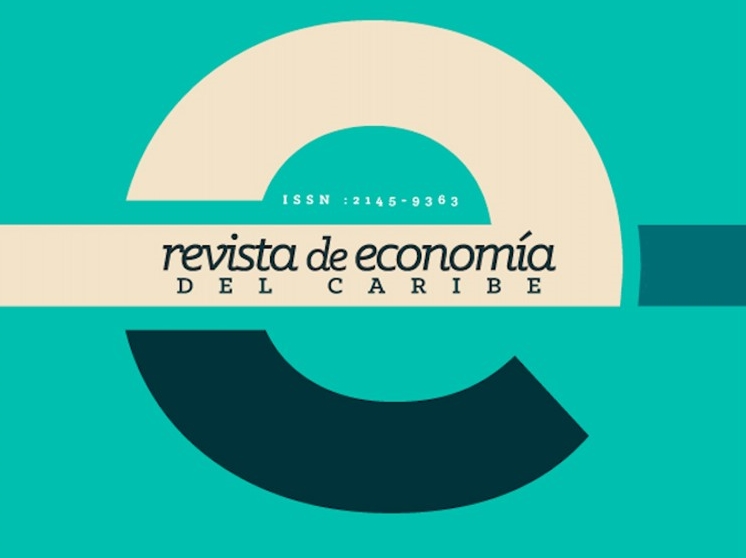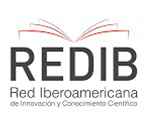Consumo, emigración y remesas ¿una relación de causalidad? El caso colombiano en el periodo 2005-2022
Palavras-chave:
remessas, Consumo final das famílias, Função consumo, Vetores AutorregressivosResumo
En este documento usando un Modelo de Corrección de Errores VECM, se estudia la relación entre emigración, remesas y consumo final de los hogares para el periodo 2005-2022. El análisis se soporta en la función consumo Keynesiana, que establece la dependencia del consumo del ingreso, se incluyen otras variables como el índice de tasa de cambio real, la emigración de colombianos, la cual según la percepción establece una relación de causalidad en el sentido de Granger con las remesas. Ahora bien, en la medida que las remesas se han incrementado, estas han pasado a formar parte del ingreso permanente de las familias receptoras, lo que establece una relación entre el consumo y las remesas, por lo que se esperaría que la emigración afecte el consumo. Los resultados encontrados indican que la elasticidad del consumo frente a las remesas es muy baja, y que es mucho más alta frente a los cambios porcentuales de la emigración de colombianos. De igual manera se ha encontrado que existe una relación de causalidad en el sentido de Granger entre emigración y consumo final de los hogares, y entre emigración y remesas.
Referências
Acosta, P., Fajnzylber, P., & López, H. (2007). The Impact of Remittances on Poverty and human capital: Evidence from Latin American Household Surveys. World Bank Policy Research. https://documents1.worldbank.org/curated/en/446091468046772511/pdf/wps4247.pdf
Amuedo, C., & Pozo, S. (2010). Accounting for Remittance and Migration Effects on Children's Schooling. INSIDE. https://www.sciencedirect.com/science/article/abs/pii/S0305750X10001270
Banco de México. (2022). Remesas y su efecto sobre el consumo de los hogares en las regiones de México en el contexto de la pandemia del covid 19. México: Banco de México. https://www.banxico.org.mx/publicaciones-y-prensa/reportes-sobre-las-economias-regionales/recuadros/%7B1D16C149-35FB-577B-4262-27DB722C71E8%7D.pdf
Banco de la República Colombia. (BR, s.f.). Banco de la República. https://www.banrep.gov.co/es/glosario/remesas#:~:text=Las%20remesas%20comprenden%20las%20transferencias,Balanza%20de%20Pagos%20de%20Colombia.
Bonilla M, L. (2016). Choques externos y remesas internacionales en las regiones de Colombia. Borradores de economía. https://www.banrep.gov.co/sites/default/files/publicaciones/archivos/dtser_250.pdf
Boutania, I., & Kawkaba, S. (2023). The impact of Remittances on household consumption: evidence from Morocco. https://hal.science/hal-04270192/document
Cadena, X., & Cárdenas, M. (2004). Las remesas en Colombia: costos de transacción y lavado de dinero. Revista Coyuntura Fedesarrollo. https://www.repository.fedesarrollo.org.co/bitstream/handle/11445/814/WP_2004_No_26.pdf?sequence=1&isAllowed=y
Centro de Estudios Monetarios Latinoamericanos CEMLA. (2007). Remesas internacionales en Colombia. https://www.banrep.gov.co/sites/default/files/sala_prensa/comunicados/adjuntos/DDP-Colombia_23may07.pdf
Dhakal., S & Oli, S. (2020) The Impact of Remittance on Consumption and Investment: A Case of Province Five of Nepal. https://www.nepjol.info/index.php/qjmss/article/view/29018
Departamento Administrativo Nacional de Estadística DANE. (2022). Sistema de Información de Estadísticas de Migración. https://www.dane.gov.co/files/investigaciones/poblacion/migracion/documento-SIEM.pdf
Garavito, A., Collazos, M., Hernández, M., & Montes, E. (2019). Migración internacional y determinantes de las remesas de los trabajadores en Colombia. Borradores de economía. https://repositorio.banrep.gov.co/handle/20.500.12134/9654
Giuliano, P., & Ruiz-Arranz, M. (2005). Remittances, Financial Development, and Growth. IFM working paper. https://www.imf.org/external/pubs/ft/wp/2005/wp05234.pdf
Gray, J., & Rodríguez, A. (2005). Estudio sobre Migración Internacional y Remesas en Colombia. Bogotá. https://publications.iom.int/system/files/pdf/estudio_sobre_migracion2.pdf
Izaguirre, M., González, A., Font, J., Cases, J., & Arenal, C. (2016). Remesas e inclusión financiera: análisis de la encuesta de migrantes de América Latina y el Caribe en España. FOMIN. https://publications.iadb.org/es/remesas-e-inclusion-financiera-analisis-de-una-encuesta-de-migrantes-de-america-latina-y-el-caribe
Khudor-Castéras, D. (2007). Migraciones internacionales y desarrollo: el impacto económico de las remesas en Colombia. Revista de la Cepal. https://core.ac.uk/download/pdf/38673673.pdf
Kireyev., A. (2006). The Macroeconomics of Remittances: The Case of Tajikistan. IFM Workig paper. https://www.imf.org/external/pubs/ft/wp/2006/wp0602.pdf
Lamsal., R. (2024). The Impact of Workers’ Remittances on Household Consumption Expenditure in Nepal: A Time Series Analysis. In Nepalese Journal of Management Science and Research. https://www.nepjol.info/index.php/njmsr/article/view/64606
Lubambu., K. (2014) The impacts of remmitance on developing countries. https://www.europarl.europa.eu/RegData/etudes/etudes/join/2014/433786/EXPO-DEVE_ET(2014)433786_EN.pdf
Medina, C., & Cardona, L. (2010). The efects of Remittences on Household Consumption, Education Attendance and Living Standards: the Case of Colombia. https://www.redalyc.org/pdf/1552/155216291002.pdf
Mendoza G, M. A. (2021). Las remesas en el contexto de los determinantes del consumo privado en México, 1995-2019. Economía Teoría y Práctica, 29(55), 87-108. https://www.scielo.org.mx/pdf/etp/n55/2448-7481-etp-55-87.pdf
Montenegro, A. (2011). Análisis de series de tiempo. Editorial Javeriana. Bogotá. D.C.
OIM. (2023). World Migration Report 2022. https://worldmigrationreport.iom.int/wmr-2022-interactive/
Ratha, D. (2003), "Workers’ Remittances: An Important and Stable Source of External Development Finance". Workersâ•Ž Remittances: An Important and Stable Source of External Development Finance
Sushanta K. Mallick, S & Mohsin, M. (2016) Macroeconomic Effects of Inflationary Shocks with Durable and Non-Durable Consumption. https:/ideas.repec.org/a/kap/openec/v27y2016i5d10.1007_s11079-016-9405-0.html
Mallik, H (2008). ¿Do remittances impact the economy? some empirical evidences from a developing economy. https://core.ac.uk/download/pdf/19918835.pdf
Solimano, A (2003), "Workers Remittances to the Andean Region: Mechanisms, Costs and Development Impact". https://publications.iadb.org/en/workers-remittances-andean-region-mechanisms-costs-and-development-impact
World Bank. (2022). Remittances brave global headwinds. Migration and Development(37). https://reliefweb.int/report/world/migration-and-development-brief-37-remittances-brave-global-headwinds-special-focus-climate-migration-november-2022-enarruzh?gad_source=1&gclid=EAIaIQobChMIr_f8k6XQggMVPzXUAR3U6gBFEAAYASAAEgKCavD_BwE
Publicado
Edição
Seção
Licença
I, ____________________________________________, author of the work and/ or article, adult, residing in the city of _________________, bearing the Identity Card/Passport n.° ______________________, issued in _______________________, in command of his/her/their physical and mental faculties, party hereinafter referred to as AUTHOR, signs the following authorization so the reproduction, publication, communication and distribution of the work can be done, under the following terms:
1. That, regardless of existing legal regulations due to the relationship of the parties to this contract, and any other existing legal presumption, the parties agree that the AUTHOR authorizes the Universidad del Norte, with the purpose of reproduce, publish, communicate and distribute the material called in the Revista de Economía del Caribe.
2. That such authorization apply to the copyright of the work, by any means, known or to be known, the public communication of the work, and the distribution of the work, directly or by third parties, purely educational purposes.
3. The AUTHOR undertakes to inform and declare the existence of this authorization and to preserve the right of the journal Revista de Economía del Caribe to the first publication of the work.
4. The AUTHOR states that the article is original and his/her/their exclusive creation, there being no impediment of any kind for the authorization he/she/they is/are giving, responding thereto by any action: claim, plagiarism or any other type of complaint that might arise about.
5. That such authorization is granted for free.
6. The moral rights of the author on the article correspond exclusively to the AUTHOR, in virtue of which, the Universidad del Norte agrees to expressly and rigorously recognize and respect them.





























